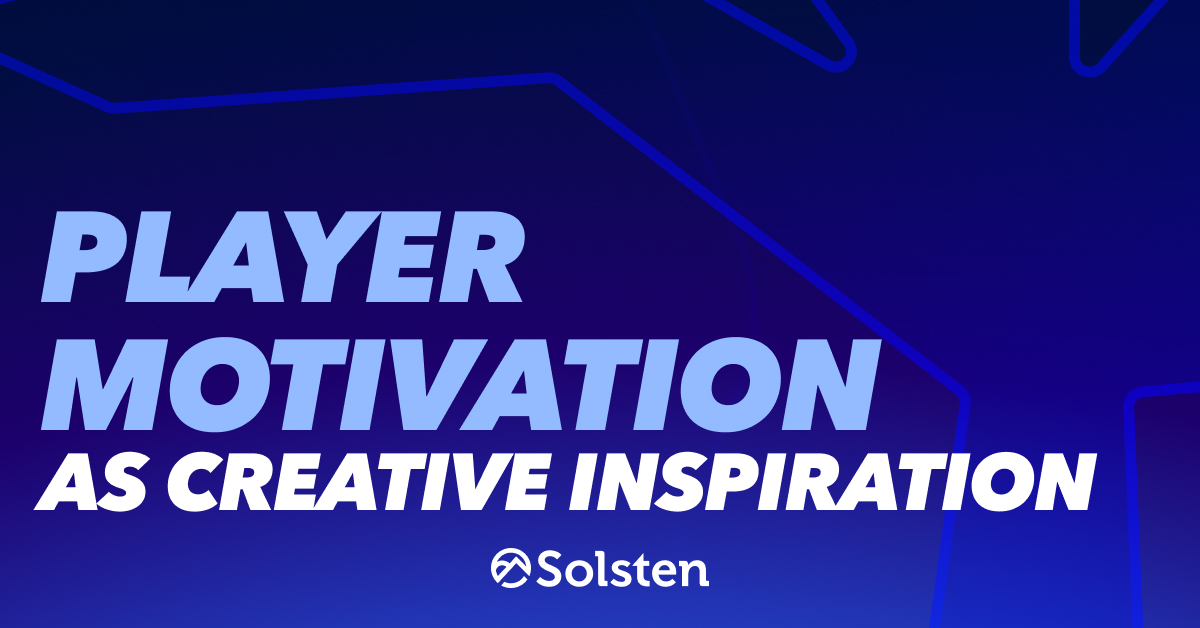As video game developers, it’s essential to create experiences that deeply resonate with players. In today’s experience economy, where people prioritize spending on games and experiences, it’s crucial to go beyond meeting expectations. To truly win, expectations need to be beat.
In 2025, with over 1,400,000 games competing for attention, understanding player psychology is essential for survival. The studios that thrive will be those that truly understand what drives their players at a psychological level.
The question then becomes… how?
Since the inception of the video game industry, developers have employed various tools to decipher player behavior. Recent efforts have revolved around player archetypes, gamer motivation profiles, and player motivation models, all constructed from a synthesis of behavioral data, extrinsic motivators, and self-reported data.
While these methods have evolved over time, the intensifying competition within the gaming landscape has laid bare their limitations. Cutting-edge developers have recognized that attempting to fit players into theoretical models has done more harm than good in their understanding of player behavior.
As a result, they’ve gone beyond standard frameworks to understand why players behave the way they do, using psychological motivation to uncover the true drivers of player engagement.
In this article, we’ll explore the limitations of player archetypes, extrinsic gamer motivation models, and observable behavioral data without the context of intrinsic human motivation. Then, we’ll see how developers are gaining instant access to psychological insights through conversational AI tools like Elaris, making deep player understanding accessible to studios of all sizes.
What can psychological data unlock that the outdated methods can’t? By truly understanding player motivations, game developers can create resonant experiences that they know will inspire, engage, and retain their player base. They can transcend category expectations, and save time and resources in the process.
Player Motivations Answer “Why”
Understanding the concept of “why” seems deceptively simple. According to Merriam-Webster, “why” is defined as “The cause, reason, or purpose for which.”
When dealing with absolutes, answering why is only limited to your knowledge of a given topic. For example, “why is the sky blue?” If you know the answer, you know the answer.
But when it comes to the complexities of humanity, why can become a riddle. Anyone who has ever engaged with a curious five-year-old knows this struggle is real. But kids don’t repeatedly ask why just to be annoying; it’s their earnest attempt to unravel the intricacies of the world around them.
Understanding why humans take certain actions and not others, whether on an emotional or behavioral level, is difficult. Philosophers and psychologists have spent centuries trying to untangle this question. The answers lie deep within our minds, and each individual comes packaged with a different explanation.
For a video game developer, discovering these answers becomes the ultimate gateway to crafting experiences that forge profound connections with players. Understanding why players exhibit specific behaviors empowers the creation of vastly more immersive and engaging experiences, rooted in an authentic comprehension of genuine player motivations.
How Player Motivations Have Historically Been Viewed
There are two distinct motivators that influence human behavior and drive people to achieve their goals — extrinsic motivation and intrinsic motivation.
Extrinsic motivation refers to external factors that make people engage in a certain activity or pursue an outcome. This often involves rewards such as recognition or praise. Extrinsic motivation is situational and can also be driven by fear or power.
In contrast, intrinsic motivation is driven by a person’s own interests, values, and desires. It comes from inside oneself. Intrinsic motivation is driven by achievement, which typically results in long-term engagement and a genuine sense of fulfillment.
Historically, researchers have limited their understanding of player motivation in video games to extrinsic motivation. This forms the foundation for constructs like the Bartle taxonomy of player types and Quantic Foundry’s Gamer Motivation Model.
Within these models, there are up to 12 distinct gamer archetypes. They have names like the Achiever, Explorer, Thrill Seeker, and Skill Master. By putting players into predefined archetypes, these models try to explain whether people play games for specific reasons. These include competition, community, design, or discovery.
Initially, player archetypes were useful tools for developers, offering guidance and the understanding of gamer motivations from an extrinsic perspective. But over time, their usefulness has dwindled, for a variety of compelling reasons.
The Limitations of Player Archetypes
Models like Bartle’s taxonomy of player types and Quantic Foundry’s gamer motivation model rely on extrinsic motivations and observed player behavior for feature assessment. Yet, these models fall short in uncovering the psychological intricacies of players. While they may serve as useful market research tools, they do not provide valid datasets for game development.
Relying solely on extrinsic player motivation archetypes means you’re relying on past behavior to predict future results. Unless you want to replicate an identical gaming experience, this isn’t a great approach for building a game with a long tail. Knowing the past can aid in predicting the future. However, it is challenging to determine when and how to apply this knowledge in a dynamic gaming environment.
Furthermore, studies have shown that extrinsic motivators don’t work, and aren’t reliable predictors of behavior. Players are elusive, highly individualized, and depend on specific circumstances and individual preferences to drive in-game actions. In other words, what motivates a player in one game or game genre may have no impact on another.
This is why tools like Elaris focus on intrinsic psychological traits rather than surface-level behaviors. By asking “What intrinsically motivates players in my genre?” you can discover the stable psychological drivers that predict long-term engagement across different game contexts.
The Power of Player Psychology
Demographics, behaviors, and extrinsic motivations have been the go-to data sets to inform the human side of game design. In the crowded experience economy, they’ve run their course. So where do game developers go from here? The answer lies in going many layers deeper, and understanding why behaviors and motivations occur.
Tools like Elaris now make this psychological understanding accessible through simple conversation. Ask questions like ‘What intrinsically motivates RPG players?’ or ‘How do competitive gamers differ psychologically from casual players?’ and get instant insights from the world’s largest psychological gaming database.
Elaris offers insights on hundreds of scientifically stable psychological traits. It offers reliable, actionable recommendations based on players’ intrinsic needs. Most crucially, it focuses on ensuring construct validity, concurrent validity, discriminant validity, and internal consistency.
Through this process, it uncovers the player’s psychology.
How Player Psychology Works
By focusing on player psychology, developers can create experiences that go far beyond matching the competition and using behavioral clustering. Instead, they can provide more intentional, curated games that prove they understand their players. These games resonate with their audience, creating incredible experiences that will keep them engaged for years to come.
For example, instead of assuming competitive players want leaderboards, you might discover through Elaris that your audience values collaborative achievement over individual dominance. This insight could lead you to design team-based progression systems that feel more authentic to your players’ intrinsic motivations.
As more studios and developers acknowledge the importance of psychosocial player intelligence, it will soon be impossible to compete without it. This is especially true for those who are beholden to legacy technologies and biased or outdated research methods.
Explore player psychology instantly
Understanding intrinsic motivations used to require expensive research teams and months of analysis. Now you can simply ask Elaris: “What psychological traits drive long-term engagement in puzzle games?” or “How do social motivations differ across gaming genres?” Get insights that inform game design in seconds, not months.
Isn’t Demographic and Behavioral Player Data Useful?
Of course, demographic and behavioral data is still incredibly useful. But when people talk about behavior, they often miss the big picture. They utilize the same list of data points that have remained stagnant for decades.
At Solsten, we know it goes deeper than that. Therefore, we also consider different values, psychological factors, sociological factors, cultural preferences, and beyond to present the full story. This includes unconscious bias and intrinsic motivation that players don’t immediately recognize in themselves.
Elaris makes this comprehensive understanding accessible to any developer. Instead of guessing at player motivations, ask direct questions about the psychology driving engagement in your genre.
FAQ: Player Motivations and Psychology in Game Development
What’s the difference between intrinsic and extrinsic motivation in games?
Extrinsic motivation relies on external rewards like points, badges, leaderboards, or achievements — things that come from outside the player. Intrinsic motivation comes from internal satisfaction: the joy of mastery, autonomy, purpose, or personal growth. While extrinsic motivators can drive short-term engagement, intrinsic motivators create lasting, sustainable player relationships that lead to higher retention and LTV.
How do I discover my players’ intrinsic motivations?
Traditional research requires expensive teams and months of analysis, but AI tools like Elaris make psychological insights accessible through conversation. Ask questions like “What intrinsically motivates players in puzzle games?” or “How do competitive players differ psychologically from cooperative players?” You’ll get instant insights from psychological data representing millions of players.
Why don’t player archetypes work anymore?
Player archetypes like “Achiever” or “Explorer” are based on observable behaviors and external motivations, but they miss the psychological “why” behind those behaviors. Two players might both be “Achievers” but for completely different psychological reasons — one seeks status recognition while another craves personal mastery. Understanding these deeper motivations enables more precise and effective game design.
Can psychological insights really improve game performance?
Absolutely. Games designed around psychological understanding see dramatic improvements: studios report 230% increases in D7 retention, 50% lower user acquisition costs, and 15-20% increases in spending when features align with player psychology. The key is moving from guessing what players want to understanding why they want it.
How do psychological motivations differ across game genres?
Each genre attracts different psychological profiles. Strategy games might appeal to players high in planning and competence needs, while social games attract those valuing collaboration and community. However, there are often surprising psychological bridges between genres that demographic data misses entirely.
What psychological traits should I focus on for my game?
It depends on your specific audience, but key traits include: autonomy (do players want control?), competence (do they seek mastery?), relatedness (do they value social connection?), status orientation, risk tolerance, and collaborative vs. competitive preferences. Tools like Elaris can help you discover which traits matter most for your genre and audience.
How quickly can I start using psychological insights in development?
With modern AI tools, immediately. Ask Elaris about your target audience’s psychology, compare different gaming demographics, or explore motivational patterns in successful games. Insights that used to require months of research and expensive consultants are now available in seconds through simple conversation.
Do psychological traits change over time or across different games?
Psychological traits are relatively stable — they represent core aspects of personality and motivation that persist across contexts. This is what makes them so valuable for prediction. While a player’s behavior might change between games, their underlying psychological drivers (need for achievement, social connection, autonomy) remain consistent.
How is this different from traditional market research?
Traditional research tells you what players did or said they want. Psychological research reveals why they made those choices and predicts what they’ll do in new contexts. It’s the difference between knowing someone bought a strategy game versus understanding that they’re driven by competence and planning needs, which helps you design features they’ll love.
Can I use psychological insights for user acquisition and marketing?
Yes, and it’s highly effective. Understanding your audience’s psychological profile lets you create ads and messaging that resonate with their core motivations. Instead of generic “play now” ads, you can craft messages that speak to achievement, social connection, creativity, or whatever drives your specific audience psychologically.
How do I measure if my psychology-driven features are working?
Monitor both traditional metrics (retention, engagement, spending) and psychological alignment indicators. Look for sustained engagement rather than just initial spikes, increased player satisfaction scores, and long-term loyalty metrics. Tools like Elaris can help you track whether your implementations are resonating with your audience’s psychological drivers.
What if my assumptions about my players are wrong?
That’s exactly why psychological insights are so valuable. Many studios discover their highest-value players have completely different psychological profiles than expected. Elaris can quickly reveal these insights, helping you avoid costly development mistakes and instead create features that truly resonate with your actual audience.



